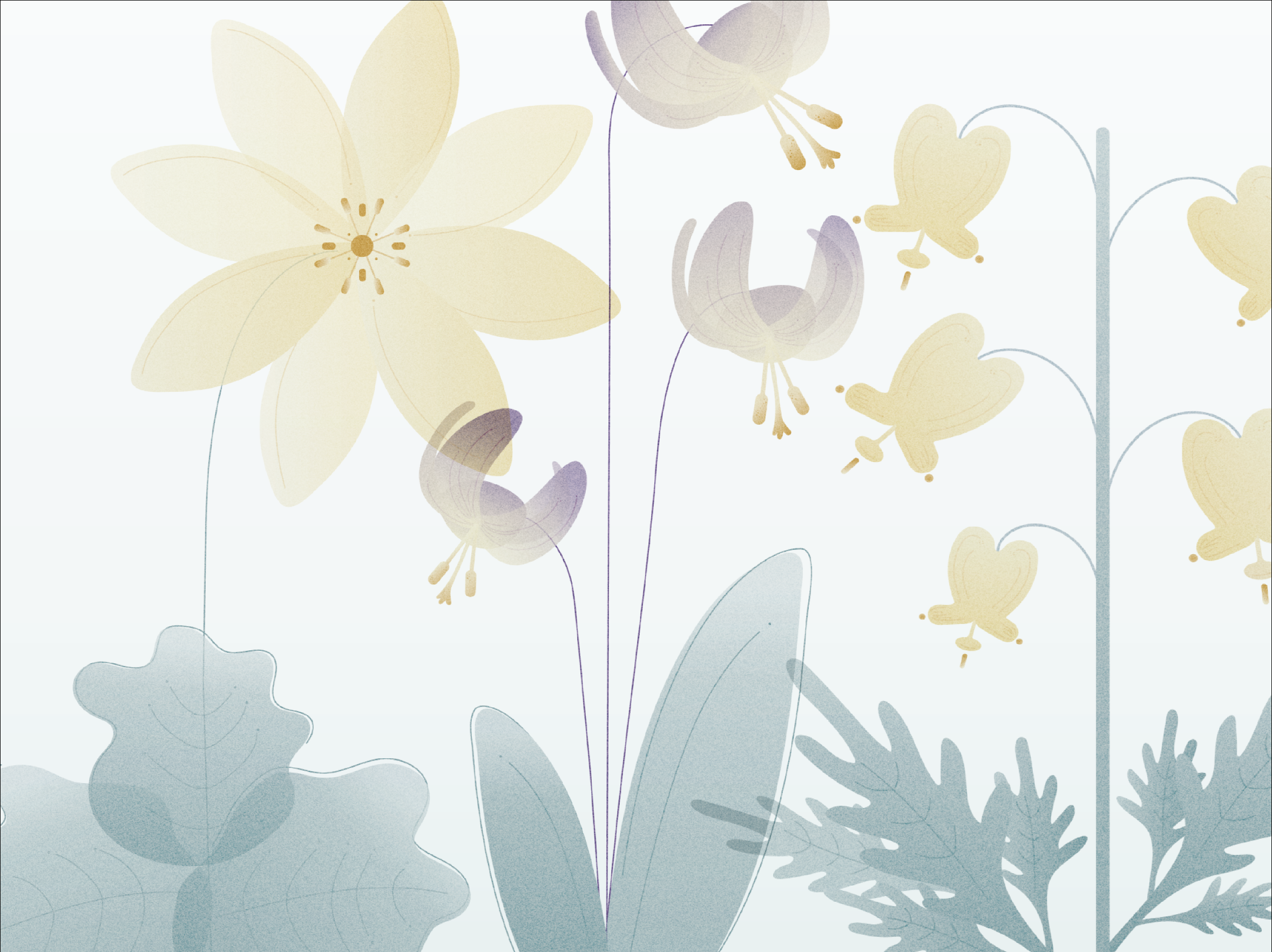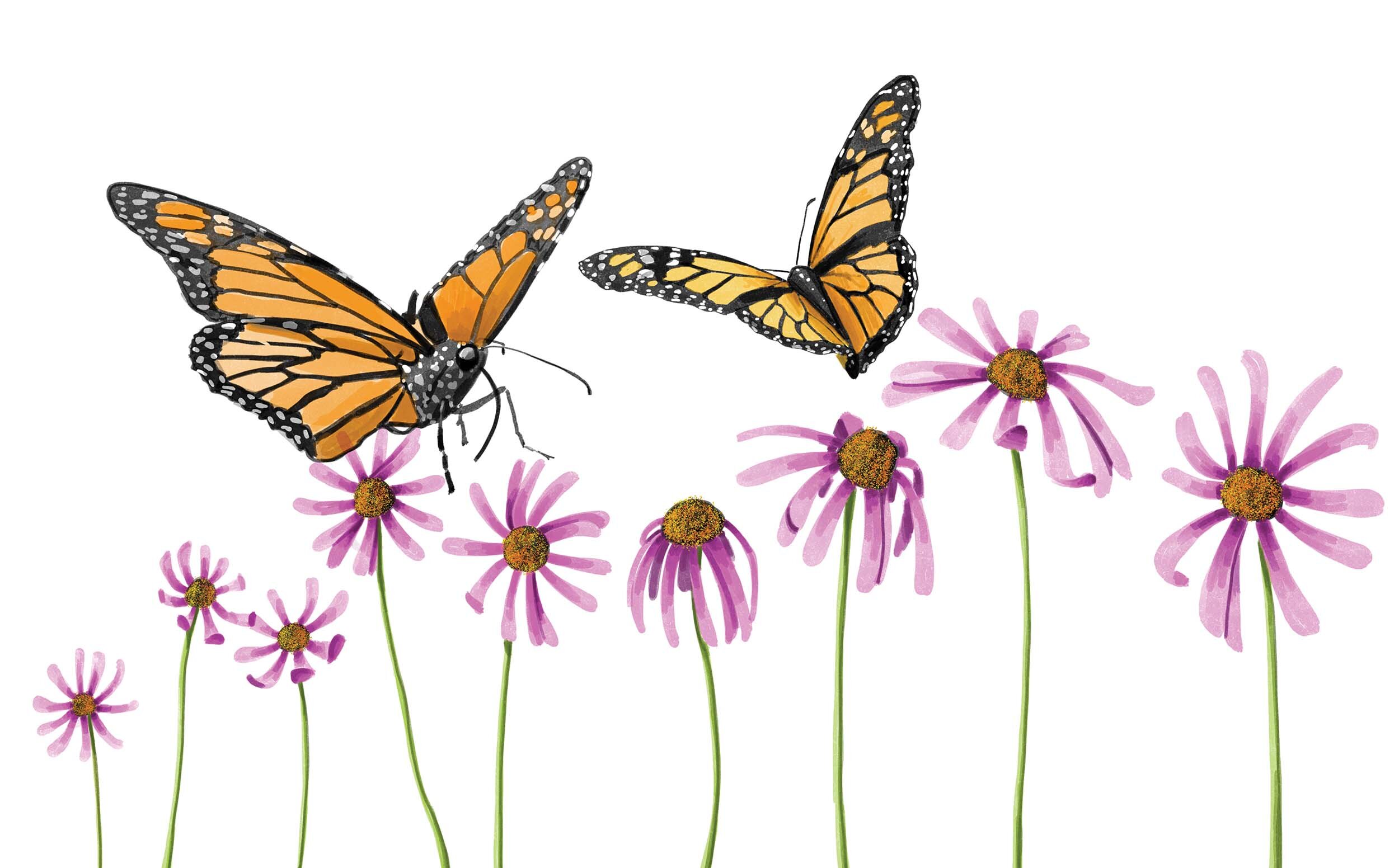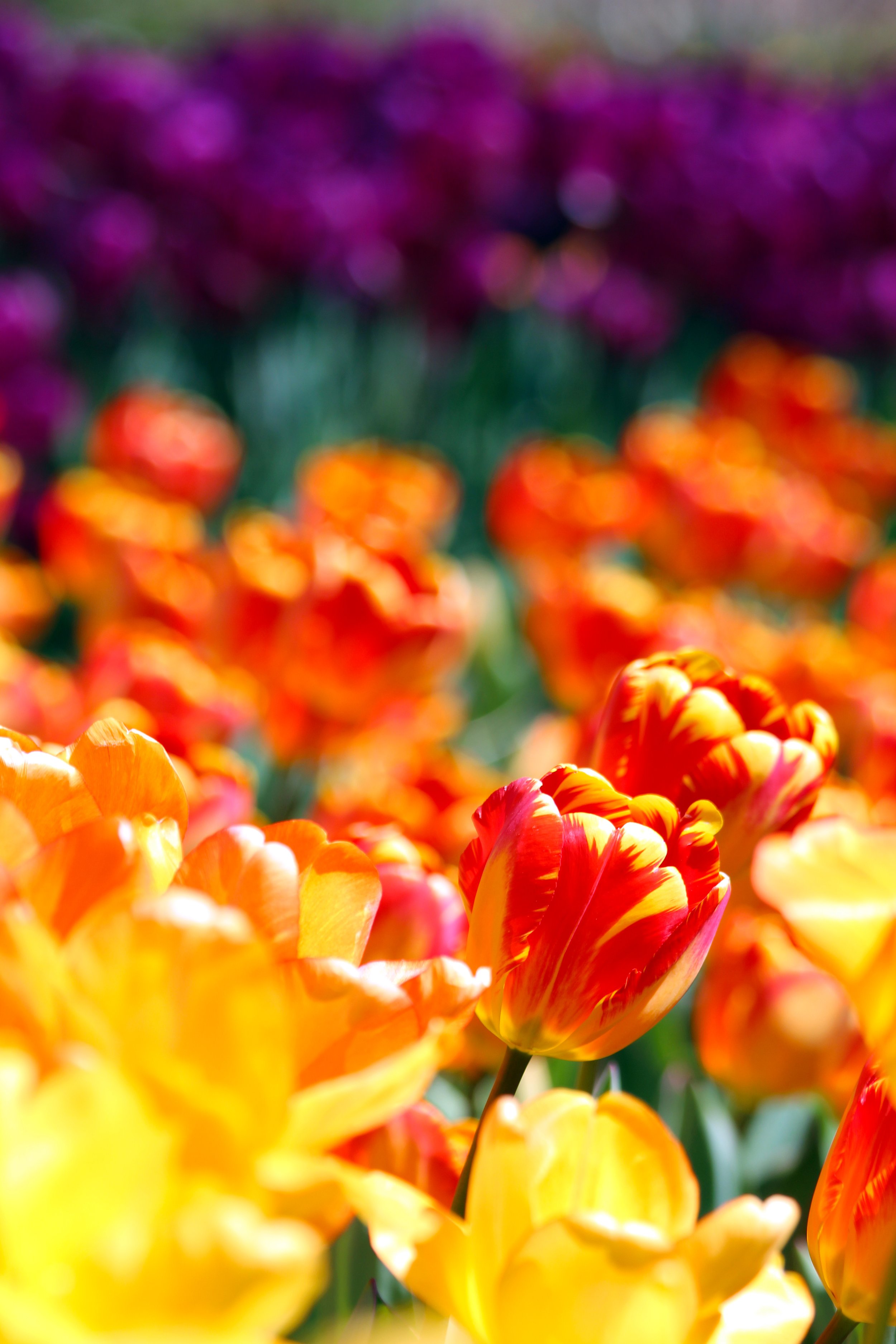Pollinator Power!

As summer ramps up, build habitats into your landscape for beneficial pollinating bees, butterflies, and more.
illustrations Elizabeth Blackwell
Globally, pollinator populations are in decline. Although we lack deep historical data in North America, a large-scale European study found that bee populations have declined in number and species richness by 40% in the United Kingdom and 60% in the Netherlands. In the United States, according to a 2018 New York Times article, scientists found the population of monarch butterflies has fallen by 90% and of the rusty-patched bumblebee by 87% in the last 20 years.
While this is in-and-of-itself depressing and terrible, it’s also a direct threat to ecosystems and, because insects are foundational, to food webs—ours included.
According to the U.S. Department of Agriculture, of the 1,400 food-producing plants grown globally, 80% require animal pollinators to yield crops. Over half of the world’s diet of fats and oils—essential to our health and many other purposes—come from animal-pollinated plants. More than 150 food crops in the U.S. depend on pollinators, including almost all fruit and grain crops.
If pollinators are in big trouble, so are we. But this is a situation where the decisions and actions of individuals can have a big impact in their home gardens. That’s because two of the major causes of pollinators’ decline, according to the U.S. Department of Fish and Wildlife, are unnecessary use of pesticides and habitat loss. Habitat loss is especially detrimental to migrating pollinators when the distance between suitable rest stops and food sources becomes too great. Here’s where even a small garden can play a big part. And in hosting these essential guests, your garden will become a more interesting, beautiful place.
Watch Out for Pesticides
Let’s start with pesticides. Actually, let’s not. Commercial pesticides are pretty nondiscriminatory, killing off the good bugs along with the bad guys. Blanket spraying, especially in farming, can also lead to pesticide resistance. If you’ve got a pest problem, choose natural, organic compounds and use them sparingly. Or manage pests manually, as in hand picking them off your plants.
And for the love of all that is good, please please please do not spray for mosquitos. The barrier sprays used by mosquito services aren’t just ineffective at killing mosquitos—which can fly, after all, and are usually hanging out in the trees when the company comes to spray—but the chemicals kill useful pollinators. Rather than use a mosquito service, address the cause. Eliminate standing water where mosquitos breed. Use “mosquito dunks” containing a naturally occurring bacterium that targets their larvae. Also, it’s worth noting that mosquitos are also pollinators. Think about that next time one gets you.
And be aware of light pollution in your landscape. “Ornamental lights might look nice, but they can mess with the rhythms of nocturnal pollinators,” says Dayton Five Rivers MetroParks education coordinator Betty Hoevel.
How to Attract Pollinators
Hoevel loves to teach people about the intricate web of highly specific relationships through which plants and pollinators support one another throughout their life cycles. The timing of a pollinator for a particular plant that feeds its offspring, she says, “is impeccable. The minute that Blue Bell opens, its pollinator has already hatched. So it’s ready to go. All of that works together. And it’s just fascinating to see it.”
While pollinators are picky about their plants, you don’t need to be. Variety is the gardener’s best friend when it comes to attracting beneficial bugs.
“You’re going to need lots of pollinators, so the idea is that you don’t look to one particular insect or animal to pollinate your garden,” Hoevel says. “They’re not like us in the sense that they can lay their eggs and then the larva will eat just any old plant.”
A well-known example of this is the monarch butterfly, she says. “They’re not going to lay their eggs on zinnias. There’s no amount of convincing you can do talking to them to change their minds. That’s built into them because when the mother butterfly lands on a leaf, she can smell through the bottoms of her feet the sugar content. She knows if it’s got the right amount of food for her larvae when they hatch.”
Planting with a diverse cast of pollinators in mind will also feed natural pest controllers. There’s the parasitic wasp, Hoevel says, which is especially effective against tomato hornworm. “You don’t need sprays, you don’t need any of this stuff, because if you’ve got the right mix of insects, they’re going to take care of that.”
So what do you need to attract a parasitic wasp? “You need a tiny flower,” she says, suggesting Alyssum or letting parsley go to flower. “You want to add those elements into your vegetable garden because they will help balance out that good-bug bad-bug thing.”
She tells gardeners who want to help pollinators to plant a lot of variety, and plant densely to crowd out weeds. A range of sizes of blooms helps support everything from the tiny sweat bees to the lumbering bumblebees, giving pollinators a smorgasbord from which to choose. Include native plants, which have much deeper roots than many cultivars, she says. “So not only are you attracting more pollinators and native pollinators, but you are working to develop the health of your soil.”
Scott Beuerlein, manager of Botanical Garden outreach at the Cincinnati Zoo & Botanical Garden, writer, and “a total plant geek for many, many years,” says, “I might actually get more enjoyment from the insects in my garden lately than I do from plants.”
Like Hoevel, he underscores the specificity of many pollinator species. “If you want to support Pipevine Swallowtail, you’re going to have to go the extra mile and source Pipevine (Dutchman’s Pipe or Birthwort).”
Do we need to worry about cultivars bred for a different color or shade? Beuerlein says the verdict is out on this—some are worse for pollinators, but some better. But one thing we should be aware of is that when many double or “pom-pom” varietals produce a double flower, it’s because the sex parts of the flower have been replaced by more petals. “In which case you get no pollen and nectar and therefore you draw no pollinators,” Beuerlein says. “What I like to tell people, because pom-pom types are really, really popular, is that you’re allowed to plant them. Just atone for your sin by planting three more pollinator plants somewhere else.”
Beuerlein, too, advocates for a highly diverse ecosystem in your landscape. If you’ve got an old tree that’s not a threat, or part of an old tree, consider leaving the stump or piles of wood. That insect habitat builds the ecosystem. And then there are little things you can do like creating a place where there’s mud in your garden, he says, which butterflies use to obtain minerals or water. He suggests creating multiple tiers of canopy too. “Those are the places where the pollinators may not actually feed or lay their eggs, but it’s where they hide from predators.” And, he says, “we’re learning that leaving some bare soil rather than mulching everything or having turf is important for some of the solitary bees.”
Bring On the Bees
Solitary bees have been very much on the mind of those concerned about the plight of pollinators and the livelihoods on which pollinators rely. Nearly all bees, about 90%, are “solitary,” meaning they don’t live in hives. And being quiet, hard workers, naturally they don’t get all the press that their congregating cousins do.
Osmia is the genus to which one type of solitary bee, the gentle mason bee, belongs. Osmia Bee Company is the work of Justina Block, who grew up with backyard beehives in Southern California where her father and uncles had a business lending honeybee hives to orchards for pollination, then collecting their honey.
Block is serious about helping bees. Her business raises beautiful blue orchard mason bees (Osmia Lignaria) and the smaller leafcutter bee (Megachilidae). She collects, cares for, and overwinters their larval cocoons. Then she supplies both nascent bees and “bee hotels” to customers. She has collaborated and supplied bees to researchers, orchards, the Cincinnati Zoo & Botanical Garden, Spring Grove Cemetery, and Bernheim Arboretum and Research Forest in Kentucky.
Four years ago, Block met a gentleman whose family has been in the leafcutter bee business for seed-crop farmers. He introduced her to a circle of pollinator researchers looking at using native bees for crop pollination. This included a study in an almond orchard where, she says, “they found that it only takes 400 female mason bees to do the work of 40,000 honeybees. And they increased yield by 25% to 35%.
“Solitary bees are very prolific pollinators,” she continues. “They carry the pollen dry and they pollinate much differently than a honeybee.” Only seven species of bees on the planet make honey. Most of the rest, Block says, are solitary bees. And some solitary bees are rock stars of pollination. With disturbing declines in honeybee populations, they’re being recruited for help.
If you want to support these bees, Block says, the first step is providing a pollination space. You need flowers, and you need them at the right time. The mason bees hatch and start foraging around when the temperature hits about 65 degrees. “So it’s very important that you’re aware of what you have in your yard come early to late March, early April. Things like crabapples and maple trees that are flowering at that time. You really want to look at plants that flower early and in cool temperatures to provide enough floral resources for the bees.”
The second step is to provide a shelter and nesting material. From OsmiaBee.com, you can order kits that include bee hotels built by regional Amish craftspeople. They’re made up of clusters of tubes or reeds. (For more info about bee habitats, check out the webinars on the website.)
Other steps you can take? Don’t mulch too deep, says Block. “Because most bees are either cavity nesting or ground nesting. When people put two or three inches on their bed and there’s a bumblebee nest underneath, she can’t emerge. You just buried her in a tomb. So I only use pine needles.”
Block loves to show people her bees, to inspire interest and to help alleviate the fear of getting stung. No bee intent on gathering pollen will sting unless provoked. But solitary bees are even more docile, without much sting anyway. And they’re incredibly beautiful. The mason is iridescent, shifting from metallic green to blue in the sunlight. The leafcutter bee sports that classic black-and-yellow bee color scheme, with glossy eyes, fuzzy thorax, and dark abdomen. “When people hold a bee, they just completely change,” Block says. “They stop using pesticides. They ask what they can do to help.”
On reflection, solitary bees are a bit like many gardeners. They’re not actually anti-social. They’re just comfortable working alone, with plants for friends. Both are examples of the power of a single being.
Whether you’re an avid gardener or just enjoy ending the day surrounded by a few potted plants on your back porch, small measures can make a world of difference for insect pollinators. They’ll reward you with their company and beauty. And they’ll work hard to support our planet’s collective health.
Pollinator-Friendly Plants for Your Landscape
The Cincinnati Zoo & Botanical Garden has many resources online, including recommended plants to attract pollinators. And you can register your garden as a Plant for Pollinators Garden; the goal is to register 500 gardens in 2021. Follow their Pollen Nation project on Facebook.
Annuals Petunia, Salvia, Sunflower, Zinnia, Lantana, Milkweed
Perennials Baptisia, Violet, Coneflower, Russian Sage, Liatris, Joe Pye Weed, Bee Balm, Aster, Sedum
Veggies & Herbs Dill, Fennel, Thyme, Mint, Lavender, Parsley, Celery
Trees & Shrubs Cherry, Crabapple, Redbud, Linden, Oak, Butterfly Bush, Hydrangea, Lilac, Spirea, Buttonbush
Botanical Illustrations by Elizabeth Blackwell from her Herbarium series. From the Collection of The Lloyd Library and Museum.
Herbarium Blackwellianum emendatum et auctum, id est, Collectio stirpium : quae in pharmacopoliis ad medicum usum asservantur, Vols 1-6 published between 1750-1773.
Ever since his grandfather put him to work squashing potato bugs and shoveling compost in a vast organic garden north of Philadelphia, Cedric has loved the outdoors. These days, he squashes bugs for his green-thumbed partner, Jen. His writing has appeared in Saveur, Cincinnati, This Old House, and Belt magazines. He is the Collector at the Mercantile Library Downtown.





